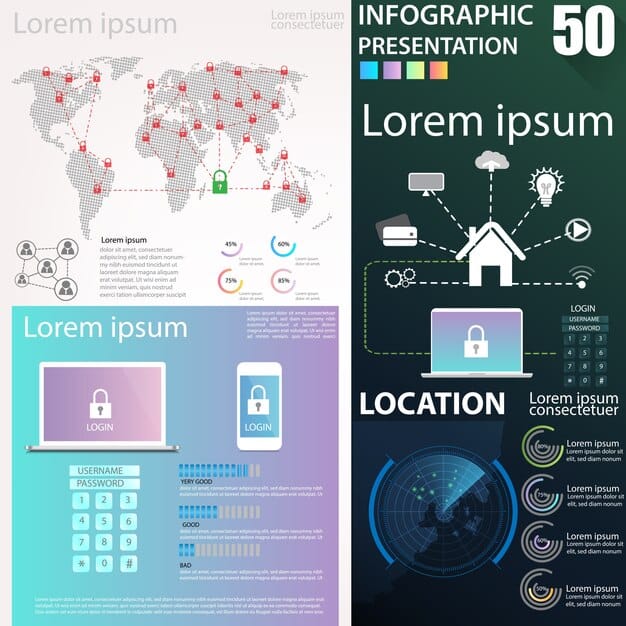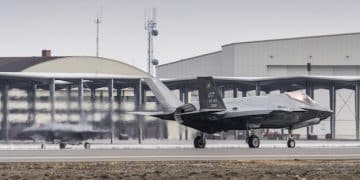Defense Industry Partnerships: Innovative Solutions Through Collaboration

Defense industry partnerships enable companies to integrate diverse expertise, share substantial development costs, and accelerate the creation of innovative, technologically advanced solutions crucial for national security and global stability.
In an increasingly complex global security landscape, the question of defense industry partnerships: how can companies collaborate to develop innovative solutions? stands as a pivotal challenge and opportunity. The traditional solo approach to defense innovation is giving way to a more integrated model, where collaboration across companies, research institutions, and even international partners is not just beneficial, but often essential.
The Imperative for Collaboration in Defense
The defense sector faces an accelerated pace of technological change and evolving threats. No single entity, regardless of its size or resources, possesses all the necessary expertise, access to cutting-edge technologies, or capital to unilaterally address every emerging defense requirement. This reality underscores the pressing need for strategic collaborations.
These partnerships are not merely about sharing burdens; they are about leveraging collective strengths to achieve outcomes that would be impossible in isolation. The synergy derived from combining different specializations, intellectual properties, and operational insights can lead to truly groundbreaking advancements.
Drivers for Collaborative Innovation
Several factors contribute to the increasing emphasis on collaborative models within the defense industry. Understanding these drivers is key to fostering successful partnerships that yield tangible, innovative solutions.
- 🚀 Technological Complexity: Modern defense systems integrate an intricate web of technologies, from artificial intelligence and quantum computing to advanced materials and hypersonics. No single company can master all these domains, making partnerships vital for integrating diverse expertise.
- 💰 Escalating Costs: Research, development, and procurement of next-generation defense capabilities involve astronomical costs. Collaboration allows for the sharing of financial burdens, making otherwise prohibitive projects feasible.
- 🌍 Global Threats & Interoperability: Contemporary security challenges like cyber warfare, asymmetric threats, and geopolitical instability demand harmonized responses. Partnerships facilitate the development of interoperable systems, enhancing multinational defense capabilities.
Furthermore, the drive for efficiency and reduced timelines in bringing new capabilities to market often necessitates a collaborative approach. By pooling resources and streamlining processes, partners can significantly accelerate innovation cycles, delivering vital tools to warfighters more quickly.
In essence, collaboration transforms the competitive landscape into a cooperative ecosystem, where mutual benefit and collective progress supersede individual gains, ultimately serving the broader objective of national and international security.
Models of Defense Collaboration: A Strategic Overview
Collaborations in the defense industry manifest in various forms, each tailored to specific objectives, risk profiles, and participant structures. Understanding these diverse models is critical for companies seeking to engage effectively and maximize their strategic advantage.
Joint ventures represent one of the most comprehensive forms of partnership, where two or more companies create a new, separate legal entity to pursue a specific project or business objective. This model typically involves significant equity investments from all parties and a shared governance structure, pooling resources, expertise, and risks directly.
On the other hand, strategic alliances can be less formal, focusing on specific projects, technology development, or market access without forming a new corporate entity. These might include co-development agreements, licensing deals, or joint marketing initiatives, allowing for flexibility and lower commitment levels than full joint ventures.
Key Collaborative Structures
Beyond formal joint ventures and alliances, several other structures facilitate defense partnerships, each with unique advantages depending on the project’s scope and nature.
- 🤝 Consortia: Often formed for large-scale, complex projects requiring diverse capabilities, consortia bring together multiple companies, research institutions, and sometimes governmental bodies. They are typically project-focused and dissolve upon project completion.
- 🔌 Supply Chain Integration: This involves prime contractors working closely with a network of subcontractors and suppliers. While traditional, modern supply chains emphasize deeper integration, shared innovation efforts, and enhanced communication beyond mere transactional relationships.
- 🧪 Public-Private Partnerships (PPPs): Collaborations between defense companies and government agencies, including military branches and research labs. PPPs can range from co-funded research to shared facilities and personnel secondments, accelerating the transition of laboratory innovations to field-ready solutions.
Moreover, academia and research institutions play an increasingly vital role. Partnerships with universities or specialized research labs often focus on early-stage research and development, bringing cutting-edge scientific knowledge and emerging technologies into the defense pipeline. These collaborations are crucial for foundational discoveries that may underpin future defense capabilities.
The choice of collaboration model often depends on the project’s complexity, the required investment, intellectual property considerations, and the desired level of integration among partners. A flexible approach, adaptable to evolving circumstances, is often the most successful strategy in this dynamic sector.
Overcoming Challenges in Defense Partnerships
While the benefits of defense industry partnerships are clear, their successful implementation is often fraught with complex challenges. Navigating these obstacles requires strategic foresight, robust frameworks, and a commitment to transparent communication among all parties.
One of the foremost challenges lies in managing intellectual property (IP). Defining ownership, usage rights, and commercialization pathways for jointly developed technologies can be contentious, particularly when partners bring disparate levels of pre-existing IP to the table. Clear, legally sound agreements are essential from the outset. Differing corporate cultures and operational methodologies can also present significant hurdles, leading to communication breakdowns and inefficiencies.
Mitigating Common Partnership Pitfalls
Addressing potential roadblocks proactively is crucial for fostering robust and productive defense collaborations. Effective strategies often involve a blend of legal, operational, and cultural considerations.
- 🔒 IP Management: Establish clear IP agreements early in the partnership. This includes defining foreground and background IP, outlining licensing terms for jointly developed technologies, and addressing data rights and security protocols.
- 🤝 Cultural Alignment: Invest in cross-cultural training and team-building exercises. Promote open communication channels and foster a shared sense of mission to bridge differences in corporate cultures and operational styles.
- ⚖️ Regulatory Compliance: Navigate the complex web of domestic and international defense regulations, including export controls, ITAR (International Traffic in Arms Regulations), and cybersecurity mandates, ensuring all partners adhere to the highest standards.

Another significant challenge revolves around security and trust. Sharing sensitive defense information requires stringent cybersecurity measures and a high level of mutual trust among partners. The risk of intellectual property theft, cyber espionage, or supply chain vulnerabilities necessitates robust protocols and continuous vigilance. Geopolitical sensitivities can also impact international partnerships, with varying national interests and export control regimes adding layers of complexity to collaborative efforts.
Finally, achieving genuine alignment on strategic objectives and risk sharing can be difficult. Partners must agree on the project’s scope, expected outcomes, and how risks and rewards will be equitably distributed. Without this alignment, partnerships can falter due to conflicting priorities or perceived unfairness. Successful partnerships are built on a foundation of trust, clear communication, and a shared vision for innovation.
Best Practices for Successful Defense Collaborations
While challenges are inherent in complex undertakings, adopting a set of best practices can significantly increase the likelihood of successful defense industry partnerships. These practices span from the initial conceptualization phase to ongoing project management and future strategic alignment.
One fundamental best practice is to conduct thorough due diligence on all potential partners. This extends beyond financial stability to include an assessment of technological capabilities, cultural fit, ethical standards, and track record in previous collaborations. A deep understanding of each partner’s strengths, weaknesses, and strategic objectives is paramount for building a complementary team.
Pillars of Effective Partnership
Successful defense collaborations are built upon several key pillars that ensure smooth operation, effective problem-solving, and sustained innovation.
- 🎯 Clear Objectives & Metrics: Define precise, measurable, achievable, relevant, and time-bound (SMART) objectives for the partnership from the outset. Establish clear key performance indicators (KPIs) to track progress and ensure accountability.
- 💬 Transparent Communication: Foster an environment of open and honest communication. Regular, structured meetings, dedicated communication channels, and clear reporting lines are essential for managing expectations and resolving issues promptly.
- 💡 Agile Methodologies: Embrace agile project management principles, allowing for flexibility and adaptability in response to evolving requirements or unforeseen challenges. Iterative development cycles can lead to faster innovation and more robust solutions.
Another crucial element is establishing a robust governance framework. This includes defining clear roles and responsibilities, decision-making processes, and dispute resolution mechanisms. A well-structured governance model provides the necessary guardrails for the partnership, preventing ambiguities and potential conflicts that could derail progress.
Furthermore, effective resource allocation and management are vital. Partners must commit adequate financial, human, and technological resources to the joint effort. Regular reviews of resource utilization and performance metrics ensure that the partnership remains on track and delivers value. Investing in joint training and integrated teams can also help foster a cohesive working environment, blurring organizational boundaries for the sake of the shared mission.
Ultimately, successful defense collaborations are not merely transactional agreements but strategic relationships built on mutual respect, shared vision, and a collective commitment to advancing national security capabilities through innovative solutions.
Case Studies: Exemplars of Collaborative Defense Innovation
Examining successful defense industry partnerships provides tangible evidence of how collaboration can accelerate innovation and deliver critical capabilities. These real-world examples illustrate the principles and best practices discussed, offering valuable insights into effective collaborative strategies.
One notable example is the development of the F-35 Lightning II Joint Strike Fighter. This program, involving multiple international partners alongside the U.S., represents one of the most ambitious and complex defense collaborations in history. Despite its challenges, the F-35 program has pioneered advanced manufacturing techniques, integrated stealth technology, and sophisticated sensor fusion, demonstrating the potential for global partnerships to deliver next-generation combat aircraft.
Lessons from Leading Partnerships
These case studies offer critical lessons on the intricacies of leveraging diverse expertise and resources in large-scale defense projects.
- 🚀 F-35 Joint Strike Fighter: Illustrates the complexities and benefits of international co-development, including shared costs, technological transfer, and interoperability across allied forces. It highlights the importance of long-term commitment and continuous adaptation.
- 🛡️ Iron Dome System: A collaborative effort between Israeli and U.S. defense companies, demonstrating how targeted partnerships can rapidly develop and deploy highly effective defensive systems against specific threats. The success hinges on specialized expertise and urgent operational requirements.
- 🛰️ European Space Agency (ESA) & Defense: While not exclusively defense, ESA projects often involve dual-use technologies and multinational defense contractors. These collaborations showcase how shared scientific and technical infrastructure can lead to innovations applicable to defense, such as advanced satellite communications and reconnaissance.
Another compelling example is the collaboration between various companies and government agencies on cybersecurity initiatives. As cyber threats evolve rapidly, partnerships are crucial for developing robust defenses. This often involves information sharing, joint research on threat intelligence, and co-development of advanced security software and hardware. Such collaborations emphasize the need for continuous adaptation and rapid deployment of countermeasures.

These examples underscore that successful defense partnerships are often characterized by a clear definition of common goals, a willingness to share both risks and rewards, and a robust framework for managing complex technical and logistical challenges. They prove that collective innovation is not just an aspiration but a tangible pathway to enhancing global security capabilities.
The Future Landscape of Defense Partnerships
Looking ahead, the trajectory of defense industry partnerships points towards even greater integration, agility, and a broader scope of collaboration, driven by emerging technologies and an increasingly interconnected global security environment.
The rise of disruptive technologies such as artificial intelligence, quantum computing, directed energy, and hypersonics will necessitate new forms of collaboration. These technologies are often developed outside traditional defense contractors, requiring partnerships with tech startups, academic researchers, and commercial innovation hubs. This shift will likely lead to more open architectures and modular designs, encouraging a plug-and-play approach to defense systems development.
Emerging Trends in Collaborative Defense
Several key trends will shape the evolution of defense partnerships, influencing how companies engage and innovate in the coming decades.
- 🌐 International & Cross-Sectoral Integration: Expect increased cross-border collaborations, not just between defense companies but also with commercial tech giants, space agencies, and environmental science firms, reflecting the dual-use nature of many critical technologies.
- 🏛️ Enhanced Public-Private Symbiosis: Governments will likely play a more active role in facilitating and even initiating partnerships, through incentives, funding mechanisms, and shared research facilities, further blurring the lines between public and private innovation.
- ⚡ Rapid Prototyping & Agile Development: Partnerships focusing on speed and iterative development will become paramount. This involves quick development cycles, rapid prototyping, and continuous feedback loops to adapt to fast-evolving threats and technological advancements.
The concept of “ecosystem engineering” will become increasingly relevant, where defense primes act as orchestrators, building networks of specialized partners to address specific capabilities gaps. This involves nurturing a diverse ecosystem of small and medium-sized enterprises (SMEs), startups, and academic institutions, each contributing niche expertise to a larger defense innovation platform.
Furthermore, data sharing and collaborative analytics will be a cornerstone of future partnerships, particularly in areas like predictive maintenance, threat intelligence, and autonomous systems. Secure and ethical frameworks for data exchange will be critical for leveraging collective insights and accelerating AI-driven defense capabilities.
The future of defense innovation will not be defined by solitary giants but by interconnected networks of collaborators, working synergistically to address complex global challenges and ensure a safer, more secure world.
| Key Point | Brief Description |
|---|---|
| 🤝 Collaborative Advantage | Partnerships fuse diverse expertise, share costs, and accelerate innovation in complex defense tech. |
| 📊 Diverse Models | From joint ventures to PPPs, models vary by objective, risk, and integration level. |
| 🚧 Overcoming Hurdles | Clear IP management, cultural alignment, and regulatory compliance are crucial. |
| 🚀 Future Outlook | Future partnerships will be more agile, cross-sectoral, and driven by disruptive tech. |
Frequently Asked Questions About Defense Industry Partnerships
Defense industry partnerships are increasingly common due to the rising complexity and cost of modern defense technologies. No single company possesses all the necessary expertise or financial resources for comprehensive innovation. Collaboration allows for the pooling of diverse knowledge, sharing of substantial development costs, and accelerated delivery of advanced solutions essential for evolving national security needs.
These partnerships typically involve prime defense contractors, specialized technology firms, small and medium-sized enterprises (SMEs) with niche expertise, research institutions, and academic bodies. Increasingly, non-traditional defense companies from commercial sectors like AI, cybersecurity, and space are also engaging, bringing cutting-edge innovations and agile development methodologies into the defense ecosystem.
The primary benefits include accelerated innovation cycles, reduced research and development costs, access to specialized technologies and talent, enhanced interoperability between systems, and the ability to address complex threats more comprehensively. Partnerships also foster a synergistic environment where diverse perspectives lead to more robust and versatile defense solutions that might not be achievable individually.
Significant challenges include managing intellectual property rights, navigating complex regulatory and export control requirements, ensuring cybersecurity and data integrity, and aligning diverse corporate cultures and strategic objectives. Overcoming these requires clear legal frameworks, robust communication protocols, and a high degree of trust and transparency among all partners involved in the collaboration.
Ensuring success involves establishing clear objectives, comprehensive due diligence on partners, robust governance frameworks, and transparent communication. It also requires a commitment to equitable risk and reward sharing, agile development methodologies, and continuous adaptation to evolving circumstances. Focusing on mutual benefit and a shared strategic vision is paramount for long-term, productive collaborations in the defense sector.
Conclusion
Defense industry partnerships are no longer a strategic option but a fundamental necessity for developing innovative solutions in an era of rapid technological advancement and evolving threats. By fostering collaborations rooted in mutual trust, clear objectives, and shared risk, companies can transcend individual limitations, pool resources, and accelerate the creation of the next generation of defense capabilities. The future of global security hinges on the ability of the defense sector to unite and innovate collaboratively, ensuring that vital solutions are developed efficiently and effectively to meet the ever-changing demands of national and international defense.





